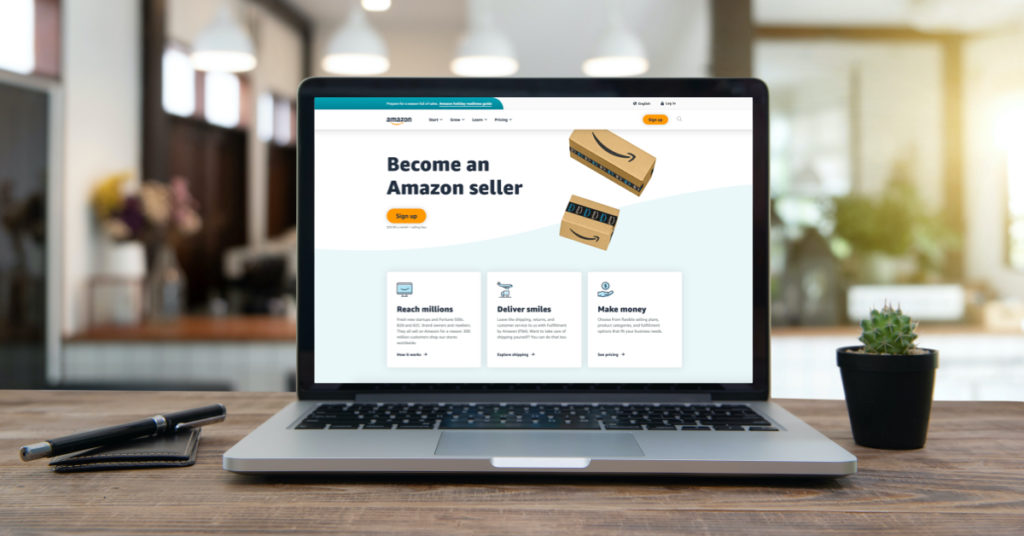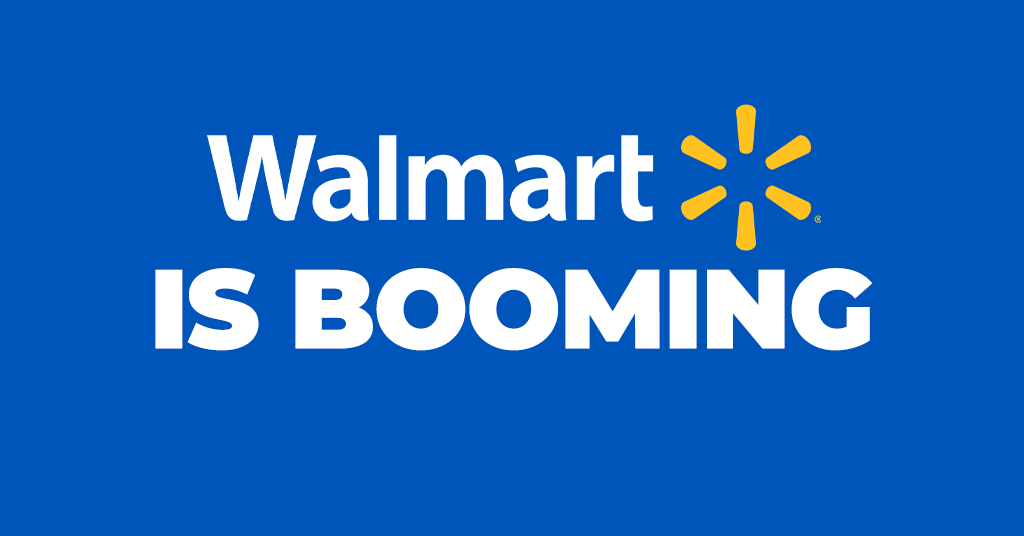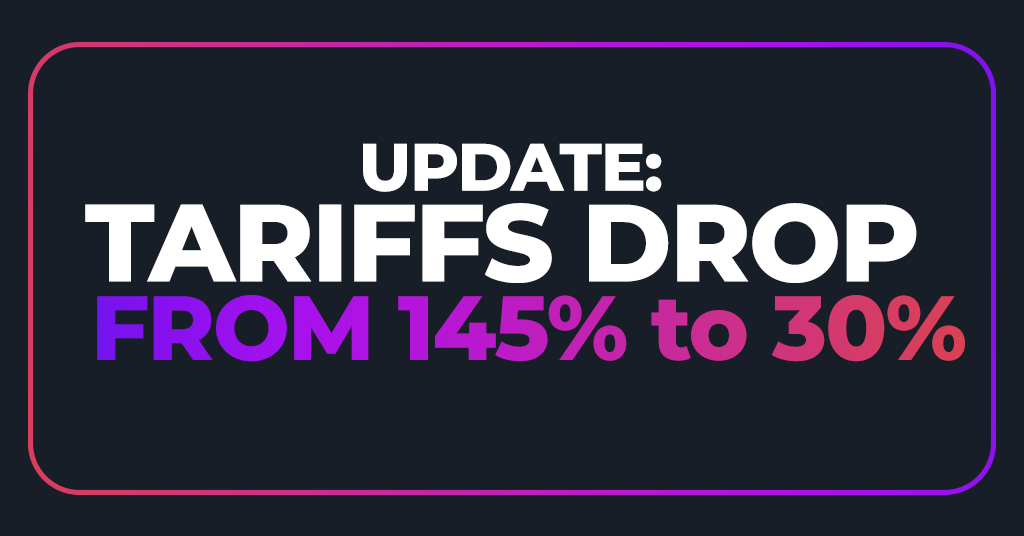In the previous article, we’ve discussed in detail what the most common elements are that brands tend not to take into consideration when deciding to switch from Vendor Central to Seller Central.
Continuing the series, now we are going to take a look at one of the most commonly repeated arguments as to why going over to Seller Central makes sense or is better.
As a reminder, the theme of this series is not to conclude that Vendor Central is better than Seller Central or Seller Central is better than Vendor Central. This is simply down to two simple reasons:
- In my opinion, one is not better than the other
- Even if one side of trading with Amazon was better, not all products are created equal, and so there is no golden rule one brand should follow. Instead, evaluate how fit-for-purpose Vendor Central and Seller Central are for their product portfolio and business.
Caveats out of the way, let’s jump right in! Do brands have more control over their account when trading through Seller Central?
Let’s start with pricing in light of the recent inflation of the dollar.
1. “Amazon won’t let me increase my wholesales but on Seller Central I’ll have control over the price”
This part breaks down into two subtopics: wholesale price increase and retail price control
Let’s start with the hot topic, wholesale increases. If a wholesale price increase is not accepted by Amazon (Vendor Manager or uploaded via Vendor Central), it is always due to Amazon’s lack of profitability on the ASIN.
Taking therefore the ASIN from Vendor Central and putting it on Seller Central will in the immediate term offer a relief (note the wording, not solution, only a relief). However in 80-85% of the cases when Amazon can’t accept a price increase because they don’t make money on the ASIN, chances are the brand won’t be able to do so on Seller Central either.
Unless you either increase the retail price (for more detail check out the next section of this point) or compromise on services offered to the customer (like not offering Prime shipping), ultimately the value chain doesn’t change and so the cost structure of the product won’t change either.
This in itself is an article in the series so stay tuned for the title: “Your baggage goes with you”, to be released in a couple of weeks. We’ll discuss wholesale increases and how to manage the profitability part of the change process should the Vendor Central to Seller Central migration go ahead in detail.
With that in mind, let’s move on to the retail price control aspect.
Strictly speaking, in a sense that the retail price is not set by the vendor, it is correct to state that the vendor has got no control over it. But we know things aren’t quite that simple.
First I’d like to spend a sentence or two on the unfortunately popular theory that Amazon leads on price. Factually speaking it just isn’t true in 90% of the cases.
The problem I come across in this topic is that people often assume Amazon leads on the price and built on an incorrect assumption, they make the incorrect adjustment. If we, for the sake of argument and just for a second, accept that Amazon follows on price, this is going to make a lot of sense.
The 10% when it is true is made up of:
- Amazon-owned unhealthy inventory that is not moving quickly enough
- Price promotion (no explanation needed)
- Special, unicorn cases (most products sold on Amazon won’t fall into this bucket)
Most common sources of problems
So let’s assume Amazon follows in the remaining 90% of the cases.
As we do so, it reduces our problem sources to:
- Sell-through management
- Other marketplaces
Sell-through management problems usually originate from either buyability problems (eg Andon cords, suppressions, etc) or traffic or conversion-related issues. Without going too deep into sell-through management, the joker card is advertising, which comes to the rescue! If the unhealthy inventory is a short-term problem, eg a couple to few weeks’ worth of inventory is stuck, a few more ad dollars will make the problem go away. If it’s more, I’m afraid more serious questions need asking, which is an entirely different topic in itself.
The point is that the sell-through of any and every ASIN is manageable and controllable.
That dealt with, let’s move onto the second source, the other marketplaces.
Everyone knows that Amazon scrapes competitor websites/marketplaces often and if they find a lower retail price there, they’ll match it. Where to draw a line in terms of which marketplace is matched and which one isn’t is very difficult. To remain solution-focused in this article, let’s just assume that the answer is: they match every single one of them.
That view simplifies what’s to come: a consistent MAP (minimum advertised pricing) policy is now not only highly recommended but with the Standards for Brands competitive pricing section, it’s graduated to the must-have category.
There are other advantages of controlling the retail price market-wide, keeping it stable and consistent. Long-term conversion rate increase, profitability increase, and brand equity are only three of those!
Back to the market-wide price consistency though, as we aren’t done yet. As soon as we implement a robust MAP policy across all customers the market becomes a level playing field. Marry that with the assumption I asked everyone to carry with them to this point: Amazon follows, it does not lead.
Merging the market-wide consistent price and Amazon following that, it becomes clear that even if we are a Vendor Central vendor, we can manage the retail price. Not directly control it, but smartly remaining in the background and managing it through ensuring the market holds the retail where it should be.
Looking at the process again, it is not too dissimilar from the actions that need to be taken on Seller Central. When Amazon finds a more competitive retail price, sellers need to find where that is and bring it back to where it should be.
So ultimately, regardless if its Vendor or Seller Central, in both cases the market controls the retail price. Not Amazon, the market. The good news is that it means as long as we keep the market in balance (again: a robust MAP policy with monitoring and enforcement is a must-have!), we control the retail price on Amazon as well. No matter whether it’s Vendor Central or Seller Central.
To conclude, Vendor Central or Seller Central really doesn’t make a difference if the argument is to move because of the price control aspect. On Seller Central, there is no more control on retail price vs what’s achievable on Vendor Central with the right strategy and execution.
What about the operations of the business?
2. Control over the FC and fulfillment
Ultimately this piece comes down to two questions:
- Wanting more freedom vs more stability
- Price of operations services (which rolls into the final point)
Freedom vs stability is not a “do this or else” type of situation, it’s more a fit-for-purpose question. If most of your brand’s business is B2B (eg. distributors or selling bigger quantities at once, etc), jumping over to Seller Central can cause some headaches. You have to consider that your fulfillment schedule will change from once a week (assuming no or low dropship on Vendor Central) to every day.
Not unresolvable by any means, but it is a change that needs managing. In addition, you’ll start seeing the in-week seasonality as well which in certain product categories can be significant (outdoor). As well as the weather-driven seasonality (eg. snow removal) – when the storm comes, your warehouse needs to be ready or you miss out on sales.
In addition, we have to discuss returns as well here – your warehouse may or may not be processing returns but now it’ll need to. Currently, Amazon does it if you’re on Vendor Central (as well as the customer service that goes with it), so make sure you allocate warehouse space for it (if 3PL, allocate budget for it – or a write-off from the books).
Ultimately there is going to be some efficiency loss on the Seller Central side – handling low/few unit orders vs bulk POs reduces efficiency whether it be more staff, longer time to get an order out of the door or more in warehouse damages. All are manageable if anticipated and planned for correctly.
From the ops department then, if it is Seller Central that comes out on top – you will have more control on the Seller Central side.
If you use a 3PL, they may charge differently (as most do) to handle bulk orders vs one unit/ order, which leads to the changing cost elements and profitability.
3. Profitability & the cost of the opportunity
Before we jump in, it’s important to state a caveat: because the basis of all profitability calculations differs on Vendor Central (wholesale) vs Seller Central (retail price which by definition is higher), Seller Central in most cases will give you higher dollar margin. This is not to be mistaken with the profit %. In my view ecommerce brands that are best in class optimize for both. You can only scale your brand if the profit % is in good shape.
Aside from the short accounting detour, being able to increase prices (because of point 1 we now know it’s not as simple as it sounds!), profitability tends to be the number one driver of the Vendor Central to Seller Central switch.
As we’ve discussed prices already, let’s look closer at a few selected and often overlooked elements of profitability, including the opportunity cost as it has a financial impact also. This is not meant to be an all-encompassing list, only some of the less talked about factors.
Less discussed elements of profitability:
- Cost of space as inventory sits in your FC vs Amazon’s. Regardless of whether you partner with a 3PL or lease/own your own warehouse, deducting bulk orders from the order flow will eventually mean you need to have more space available if you sell 1 by 1 units at a time. And space in the current environment can get pretty expensive pretty quickly, so don’t take this lightly. (Anyone else heard brands paying for food grade storage in the New York/New Jersey area for non-food products? Crazy world!)
- Cost of inbound, store, pick pack one by one vs bulk. As alluded to this point before, the monetization of order processing differs and in most cases differs by big margins, if you move from Vendor Central to Seller Central. It does give you more control though.
- Cost of opportunity if your shipping partner can’t allocate enough trucks to ship your orders. I more and more often hear this line from the ecommerce world. No trucks by FedEx, UPS, etc, no revenue. Having the peace of mind that Amazon will ship all your products on time, every time (FBA counts also but excluded from this piece as chances are if you’re on the edge of making the switch, most probably you won’t have unlimited storage allocation just yet, so it isn’t comparable). Customers not only appreciate it but expect it – imagine if your product in question is high customer retention driven and high reorder rate driven product. It is a pretty significant risk to perhaps upset a loyal customer.
So have you got more control over your profitability on Seller Central? More buffer in terms of dollars because of the retail price becoming the base for the calculation. The answer is yes. But more control? Not really.
Because the value chain won’t differ significantly and your brand’s economics won’t change overnight either, Seller Central won’t mean you have more control over the profitability piece of the business vs remaining on Vendor Central.
Conclusion
Overall and summing up, Seller Central used to offer more direct control. However bringing the two platforms closer together, Amazon reduced the gap. That’s on top of the fact that retail prices and the profitability of the business are not more controllable on Seller Central.
The key point here is that Amazon made it so that your brand’s economics are now directly reflected in your Vendor Central profitability. If you bring it onto Seller Central, they have the same impact. Therefore in my experience, it is more rewarding to understand and adjust your brand’s economics (regardless of Vendor Central or Seller Central). That ensures you have a sustainable feasible business and whatever changes are ahead of us on Amazon, your brand is best equipped to face them.
The true answer to the original question then is not about whether Seller Central offers more control or Vendor Central offers more control. The answer is that the more Amazon compatible your business becomes, the more control you have. On both sides.
About the author
Peter Beke is one of the two ex-Amazonian co-founders of The Hawker’s Club. An e-commerce advisory that works with America’s most authentic and unique e-commerce brands to ensure these brands directly position their value offer and brand potential as an Amazon partner and they gain profitability and sustainable revenue growth with certainty.
Outside of work, Peter is an amateur craft brewer and road trip enthusiast.





